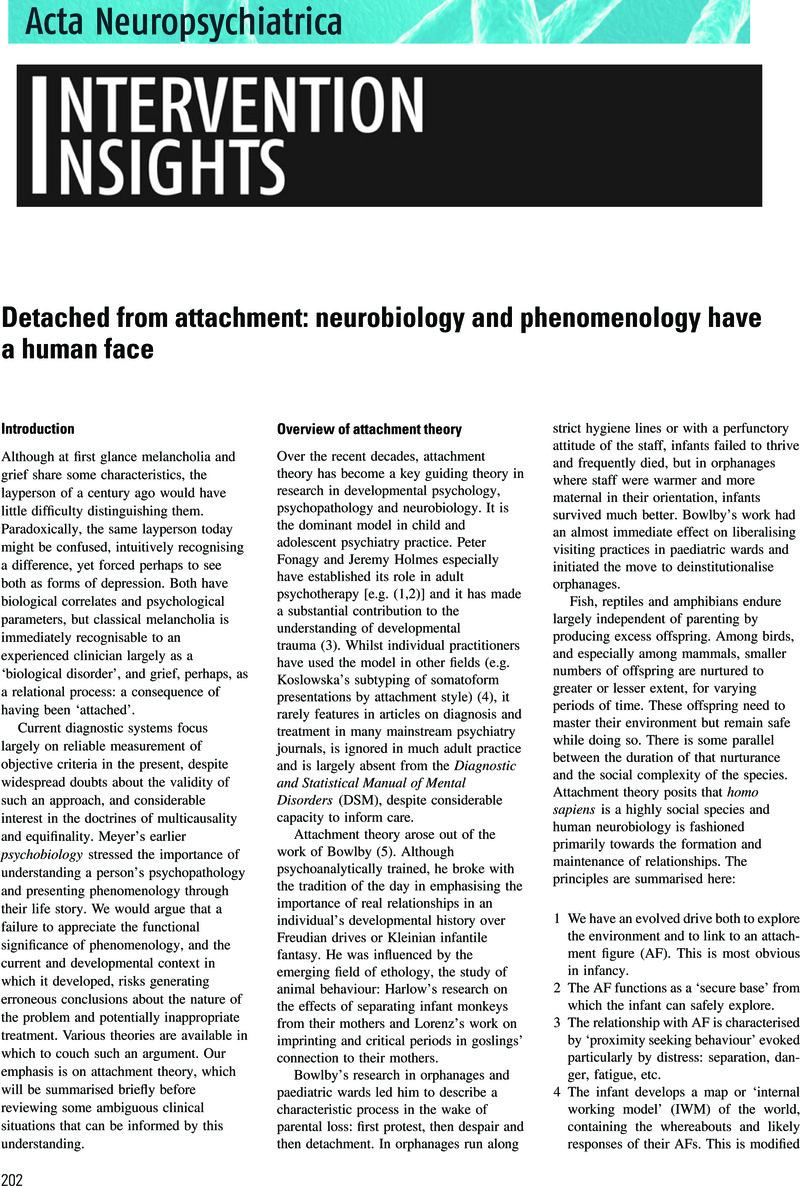Crossref Citations
This article has been cited by the following publications. This list is generated based on data provided by Crossref.
Malhi, Gin S.
2010.
Providing a Critical Role….
Acta Neuropsychiatrica,
Vol. 22,
Issue. 4,
p.
167.
Parpottas, Panagiotis
2012.
A critique on the use of standard psychopathological classifications in understanding human distress: The example of ‘schizoid personality disorder’.
Counselling Psychology Review,
Vol. 27,
Issue. 1,
p.
44.
Anderson, George
Maes, Michael
and
Berk, Michael
2012.
Advances in Protein Chemistry and Structural Biology Volume 88.
Vol. 88,
Issue. ,
p.
27.
Parry, Peter I.
and
Levin, Edmund C.
2012.
Pediatric Bipolar Disorder in an Era of “Mindless Psychiatry”.
Journal of Trauma & Dissociation,
Vol. 13,
Issue. 1,
p.
51.
Parker, Gordon
Fletcher, Kathryn
Berk, Michael
and
Paterson, Amelia
2013.
Development of a measure quantifying adverse psychotherapeutic ingredients: The Experiences of Therapy Questionnaire (ETQ).
Psychiatry Research,
Vol. 206,
Issue. 2-3,
p.
293.
Basu, Soumya
and
Parry, Peter
2013.
The autism spectrum disorder ‘epidemic’: Need for biopsychosocial formulation.
Australian & New Zealand Journal of Psychiatry,
Vol. 47,
Issue. 12,
p.
1116.





